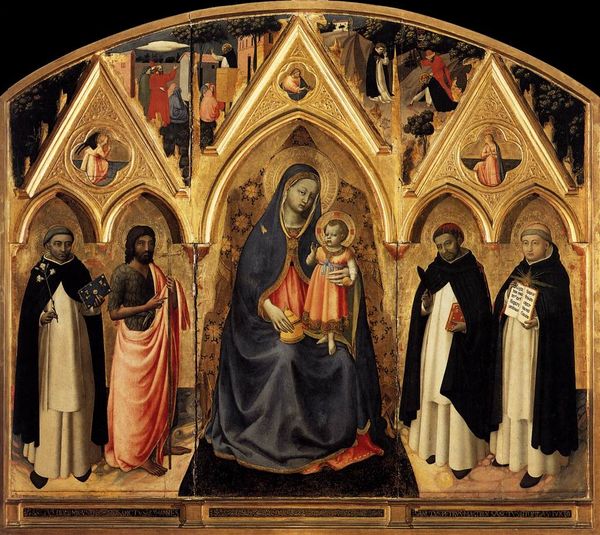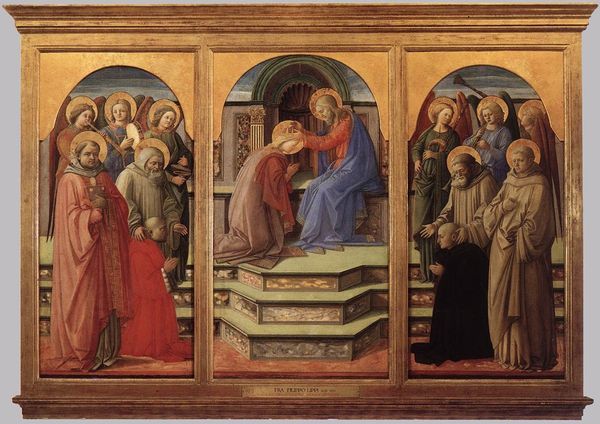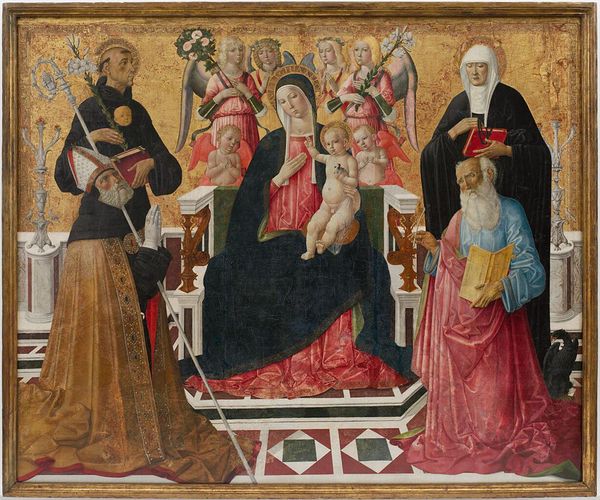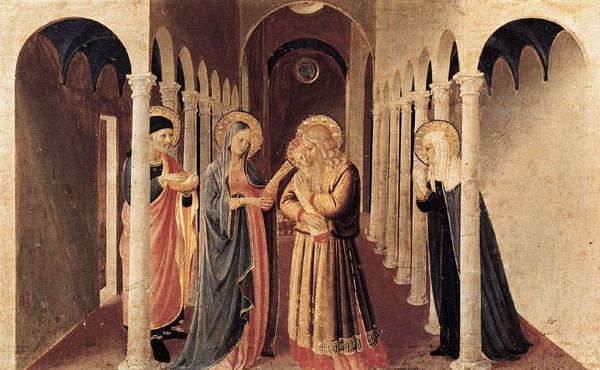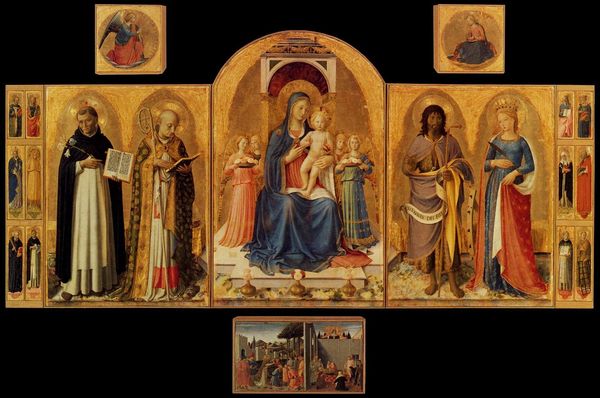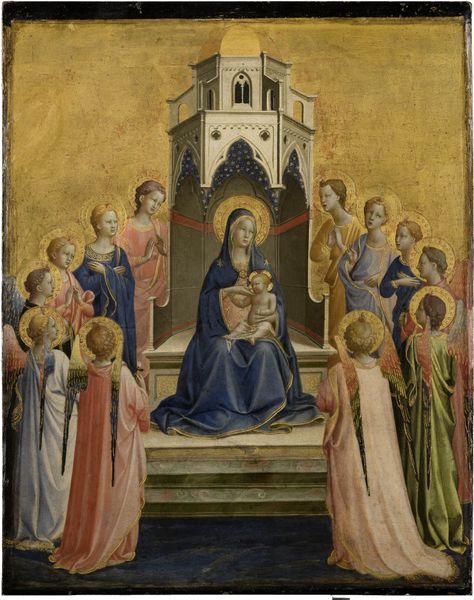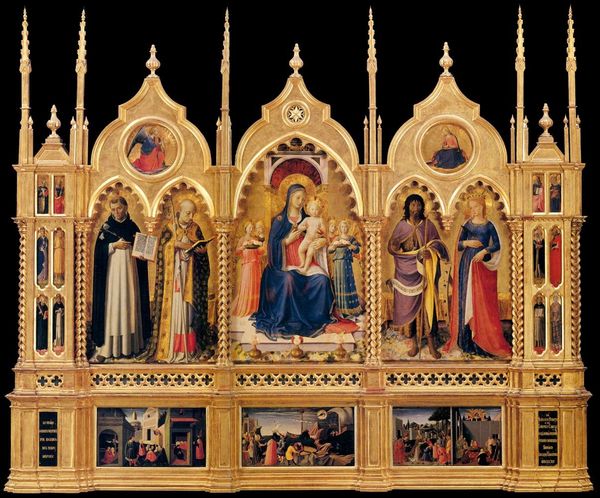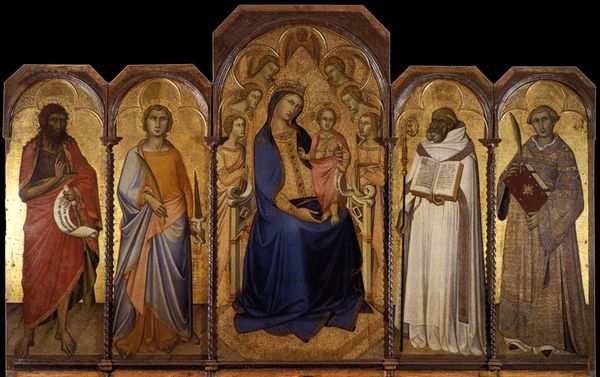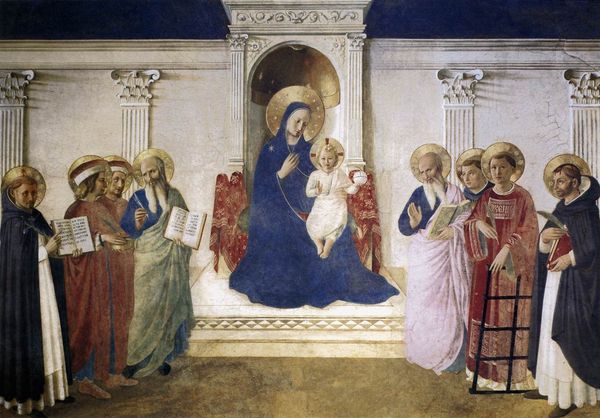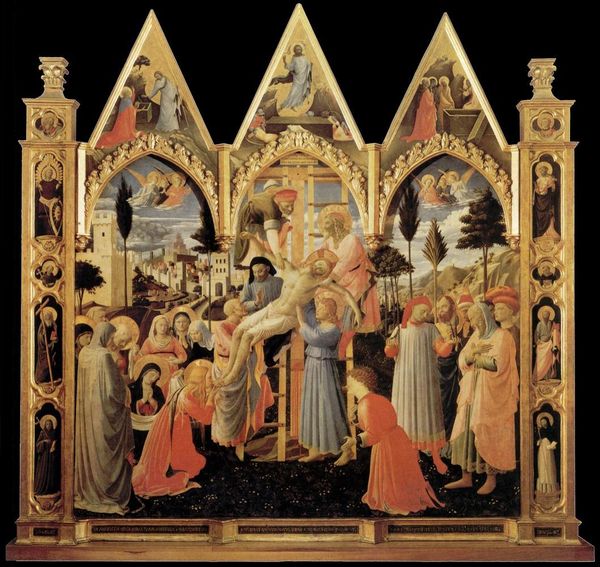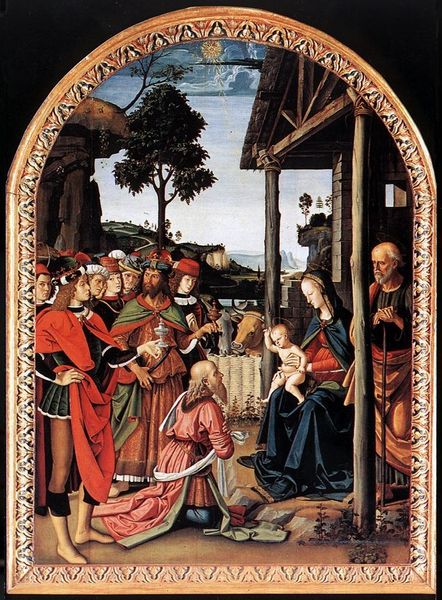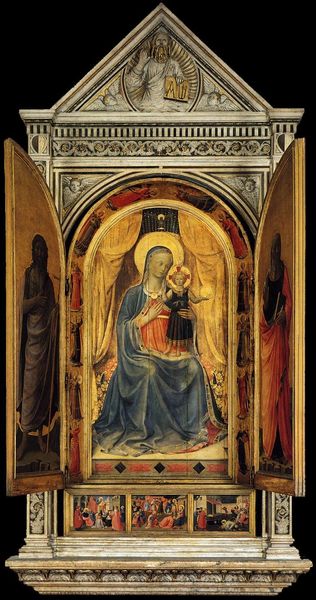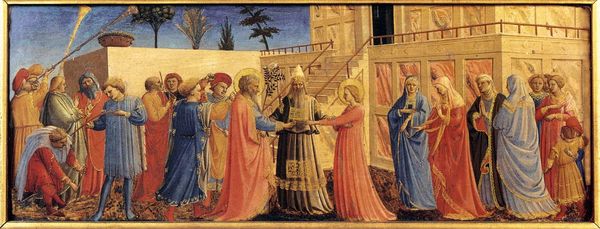
Madonna and Child with Sts John the Baptist, Peter, Jerome, and Paul 1456
0:00
0:00
benozzogozzoli
National Gallery of Umbria (Palazzo dei Priori), Perugia, Italy
panel, tempera, painting, fresco
#
portrait
#
medieval
#
panel
#
tempera
#
painting
#
figuration
#
fresco
#
child
#
christianity
#
history-painting
#
italian-renaissance
#
virgin-mary
#
christ
Dimensions: 122 x 212 cm
Copyright: Public domain
Editor: This is "Madonna and Child with Sts John the Baptist, Peter, Jerome, and Paul," a tempera on panel made in 1456 by Benozzo Gozzoli. I find the assembly of figures quite striking. How would you interpret its cultural significance? Curator: This altarpiece reveals much about the socio-political landscape of 15th-century Italy and how religious imagery functioned within it. Notice the carefully constructed hierarchy and the symbolic weight carried by each saint. Who do you think would have commissioned such a piece, and where might it have been placed? Editor: Given its size, it might have been a church commission or perhaps for a wealthy family's private chapel? The gold background also makes it look pretty valuable. Curator: Exactly. These altarpieces weren't just devotional aids, they were statements of power, wealth, and civic pride. Consider how the depiction of these particular saints – Peter, Paul, Jerome, John the Baptist – might have served the specific interests or devotions of the patron and the community where it was displayed. The institutional endorsement through their figures sanctified social standing. Editor: So, the arrangement wasn't just aesthetic. Each element, even the choice of saints, contributed to a broader cultural message. Were there rules, I mean conventions for portraying wealth? Curator: Absolutely. The lavish use of gold leaf, the expensive pigments, the scale of the work itself – all these were signifiers of status. But also think about the implied access to education and theological knowledge needed to appreciate the symbolism. Art was a powerful tool in shaping public perception and reinforcing social order. Editor: I see, it's less about individual expression and more about upholding communal and power structures through symbolic displays. Thank you, that gives me a lot to think about regarding art’s role at the time! Curator: Precisely. And considering the painting in its original location tells a story about the intertwined nature of art, power, and faith. Looking beyond the surface invites many such revelations.
Comments
No comments
Be the first to comment and join the conversation on the ultimate creative platform.
